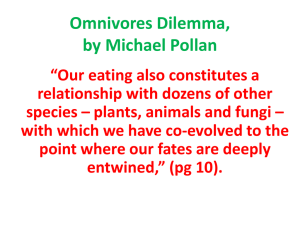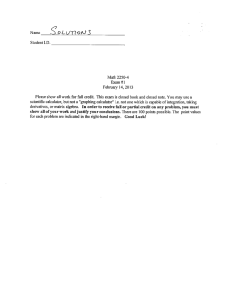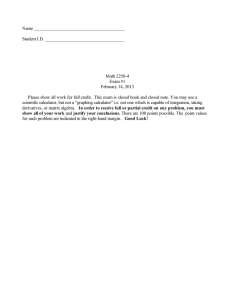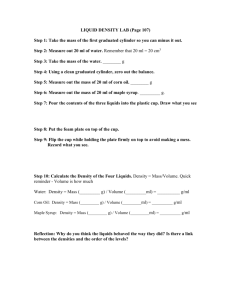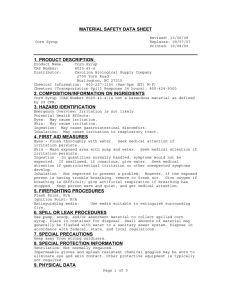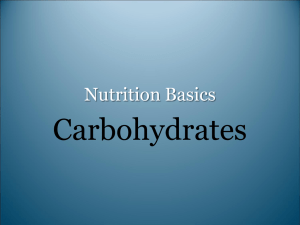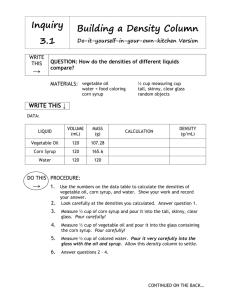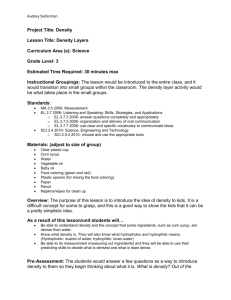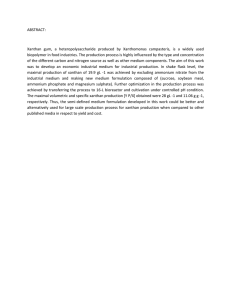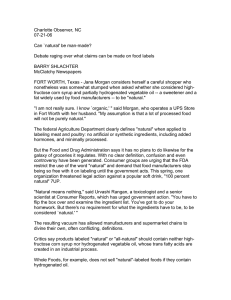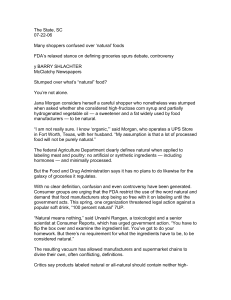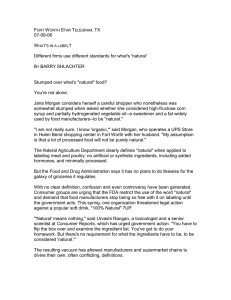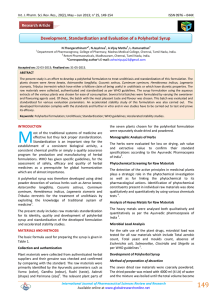02.Products of Biochemical Engineering.web
advertisement
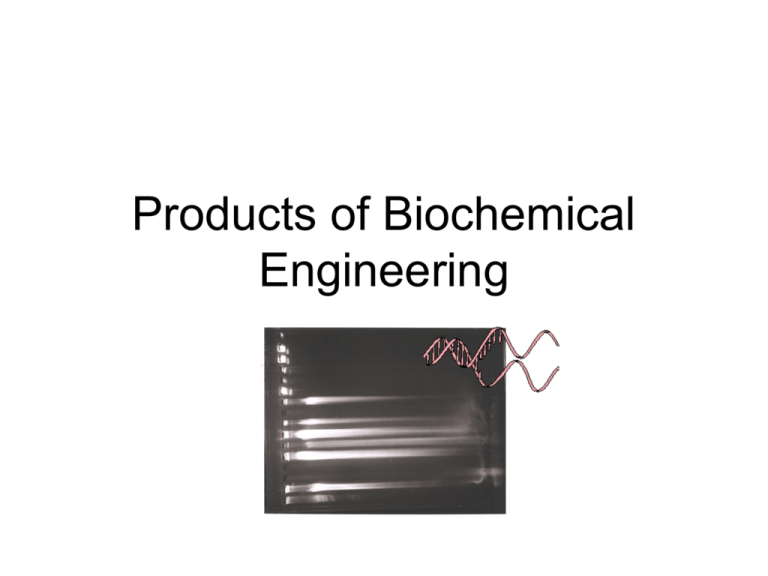
Products of Biochemical Engineering How long ago? • Sumerians and Babylonians were brewing before 6000 BC (evidence in pyramids) • Egyptians “let my people go” were baking before 4000 BC • Distilleries? 14th C. Ancient biotechnologies • vinegar for fries... acetic acid bacteria • lactic acid to acidify milk... yogurt • cheese to stabilize milk... bacteria and molds Industrial age • glycerol fermentation developed by german biochemist Carl Neuberg during WW1 • butanol/acetone fermentation developed by chemist Chaim Weizmann using Clostridium acetobutylicum Antibiotics • folk medicine: moldy cheese, meat, bread • Tyndall, Pasteur, Roberts noted antagonistic effects of one organism on another... 1870’s Alexander Fleming • noted that Penicillium notatum contaminant killed culture of Staphylococcus aureus (1928) • penicillin production reality in 1941 Penicillin • prepared in highly dilute, impure and unstable solutions prior to WWII • up to 1943, batch purification process that inactivated up to 65% • Shell chemical engineers build pilot plant that processed 750 L broth/day with 85% recovery more on penicillin • 1943 – 4,100 patients/month • 1944 – 250,000 patients/month • MIT chemical engineers built first production plant involving freeze drying technologies in 1942/43 Bugs on steroids? • the superbug: td = 10 to 15 min Classes of industrial microbes • bacteria • molds (fungi) • yeast (fungi) • actinomycetes Prowhat? • Procaryotes – nuclear region, single strand of ds-DNA – bacteria, actinomycetes, bluegreen algae • Eucaryotes – nucleus, multiple chromosomes Other industrial cultures • tissue culture: mammalian, insect... • plant tissue culture Classes of products • • • • Microbial cells Large molecules (104 – 106 daltons) Primary metabolites (essential for growth) Secondary metabolites (who knows why?) Microbial cells • single cell protein • yeasts used in brewing, baking Microbial cells • cells used in bioconversion, biotransformation reactions – ethanol --- acetic acid (Babylon, 5000 BC) – isopropanol --- acetone – sorbitol --- sorbose (manufacture of vit.C) – steroid transformations – fumarate --- malate Large molecules • enzymes as catalysts – amylases in brewing, baking, textiles – proteases in brewing, meat tenderizing, detergents, leather (rennin) Enzymes as catalysts • • • • • • • ambient T and P (low energy) water solvent few side reactions (no by-products) highly specific for substrate high yields possible costly and can be unstable difficult to separate and reuse High fructose corn syrup corn starch (α1,4 glucose) liquefaction (α-amylase) soluble dextrins (oligosaccharides) saccharifaction (glucamylase) glucose syrup isomerization (glucose isomerase) fructose syrup (50/50) Polysaccharides • Xanthan from Xanthomonas campestris • food additives as stabilizers, thickeners, emulsifiers • drilling muds Pullulan • polysaccharide produced by Aureobasidium pullulans (fungus) • edible and biodegradable films (low O2 permeability) Primary metabolites • amino acids: L-glutamic acid, L-lysine • purine nucleotides: IMP (inosine 5’monophosphate) • vitamins: riboflavin, B12 • organic acids: citric, gluconic, fumarate, malate • solvents: ethanol, 2,3 butanediol • plants in Ontario (4) and Quebec (1) Secondary metabolites • antibiotics: bacitracin, erythromycin • toxins: mycotoxins • alkaloids • growth factors • pigments, flavours, fragrances Were you paying attention? • Big Mac sauce: soybean oil, pickles, vinegar, water, sugar egg yolks, high fructose corn syrup, mustard, salt, xanthan, potassium sorbate, spice, soy, corn and wheat protein, EDTA • water, glucosefructose syrup, colour, phosphoric acid, natural flavours, caffeine water, glucose-fructose, citric acid, tea, lemon flavour chicken broth, egg noodles, water chicken, salt, chicken fat, corn starch monosodium glutamate, onion, yeast extract, spice, beta carotene, garlic sorbitol, water, silica, glycerin, sodium alkyl sulfate, polyethylene glycol-6, flavour, xanthan, saccharin, triclosan, carbopol 956, titanium dioxide, sodium fluoride, tetrasodium pyrophosphate
